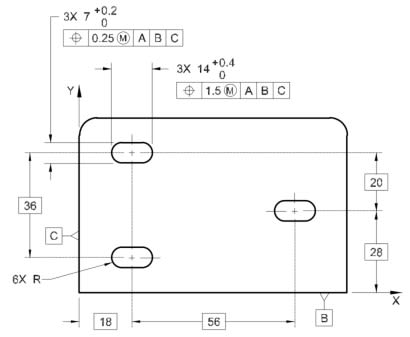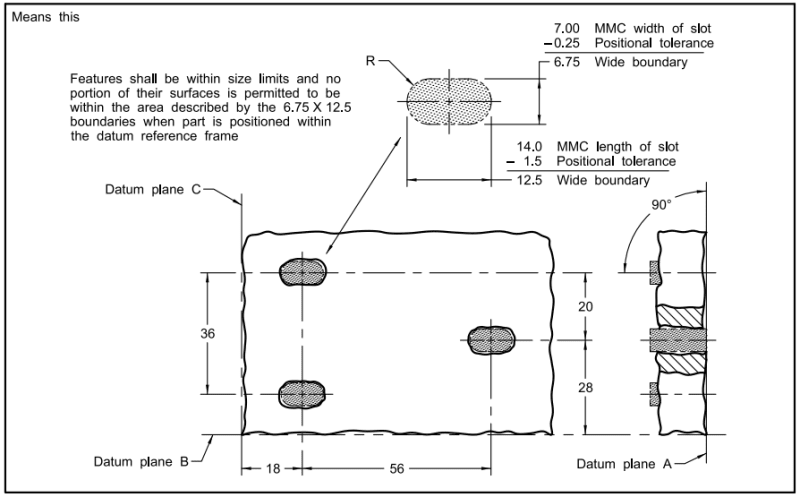Hi all,
I understand how TP tolerances are distributed by the difference in MMCs in reference to Y14.5 appendix B (fixed fastener/floating fastener conditions).
When it comes to bidirectional tolerancing for slotted holes, I can speculate that you can apply those formulas to the narrow width of the slot.
How would you calculate your TP tolerance for its length? Every example online seems like the length is arbitrary.
I appreciate the responses.
I understand how TP tolerances are distributed by the difference in MMCs in reference to Y14.5 appendix B (fixed fastener/floating fastener conditions).
When it comes to bidirectional tolerancing for slotted holes, I can speculate that you can apply those formulas to the narrow width of the slot.
How would you calculate your TP tolerance for its length? Every example online seems like the length is arbitrary.
I appreciate the responses.


